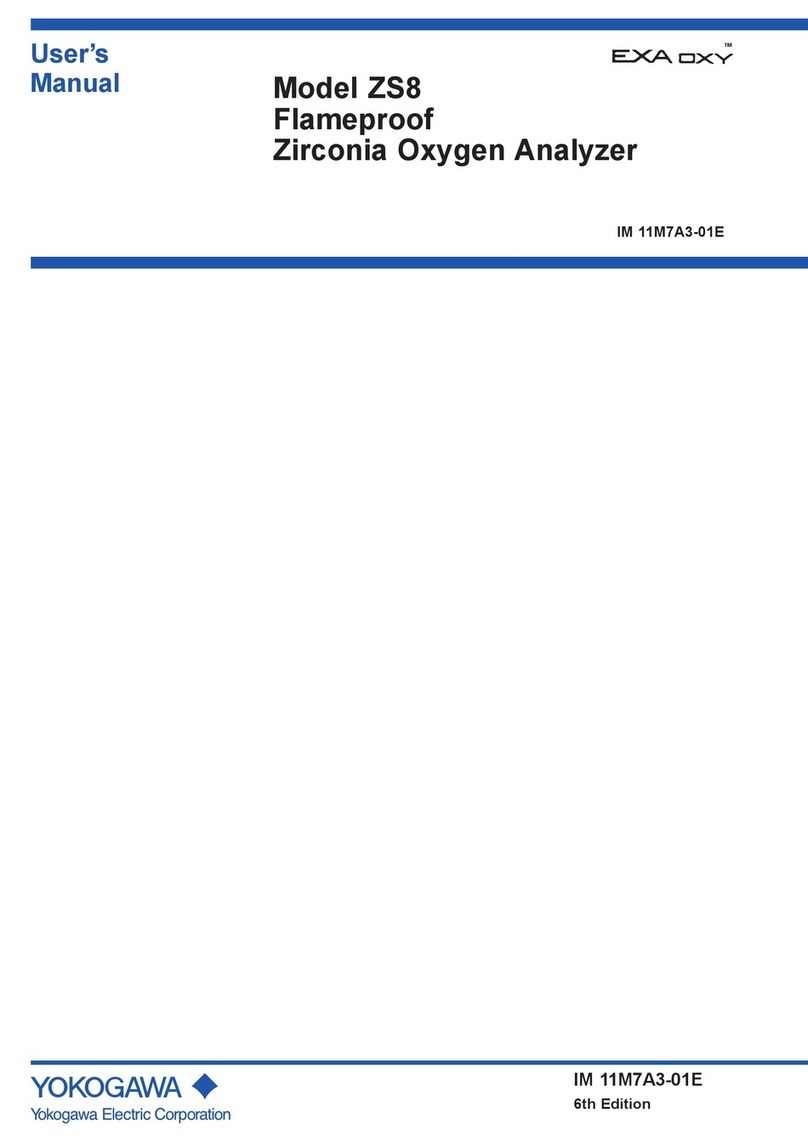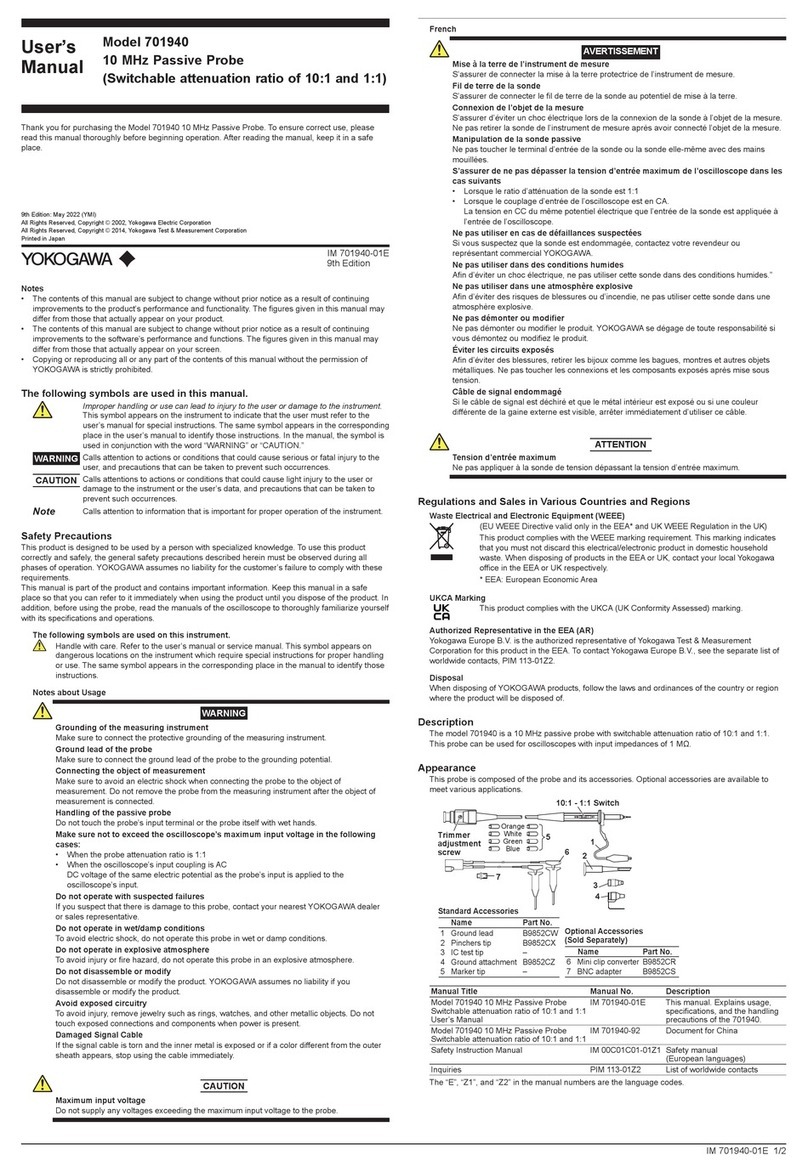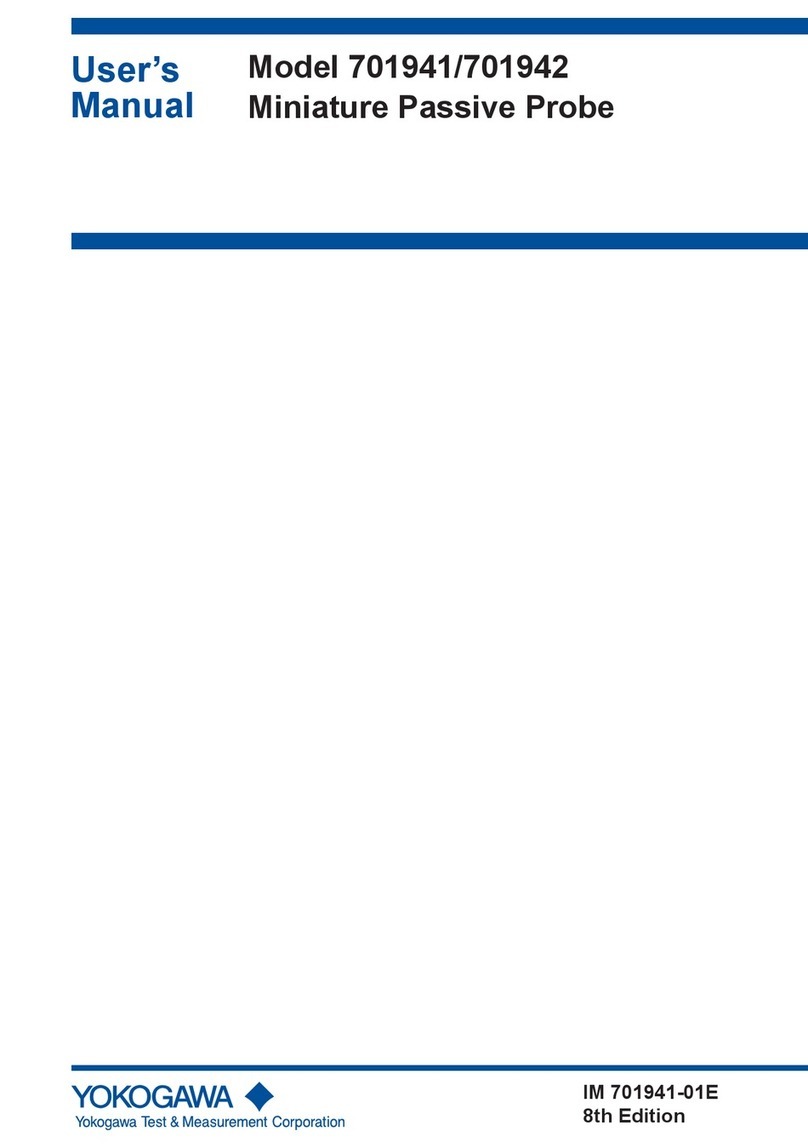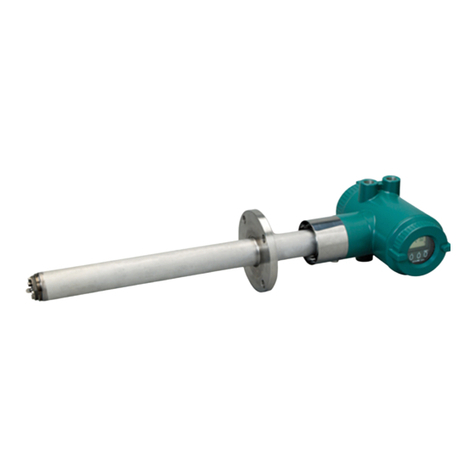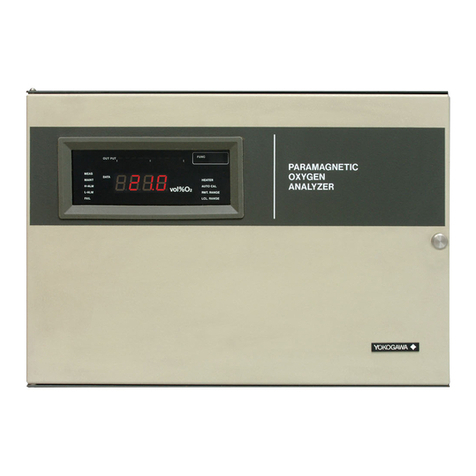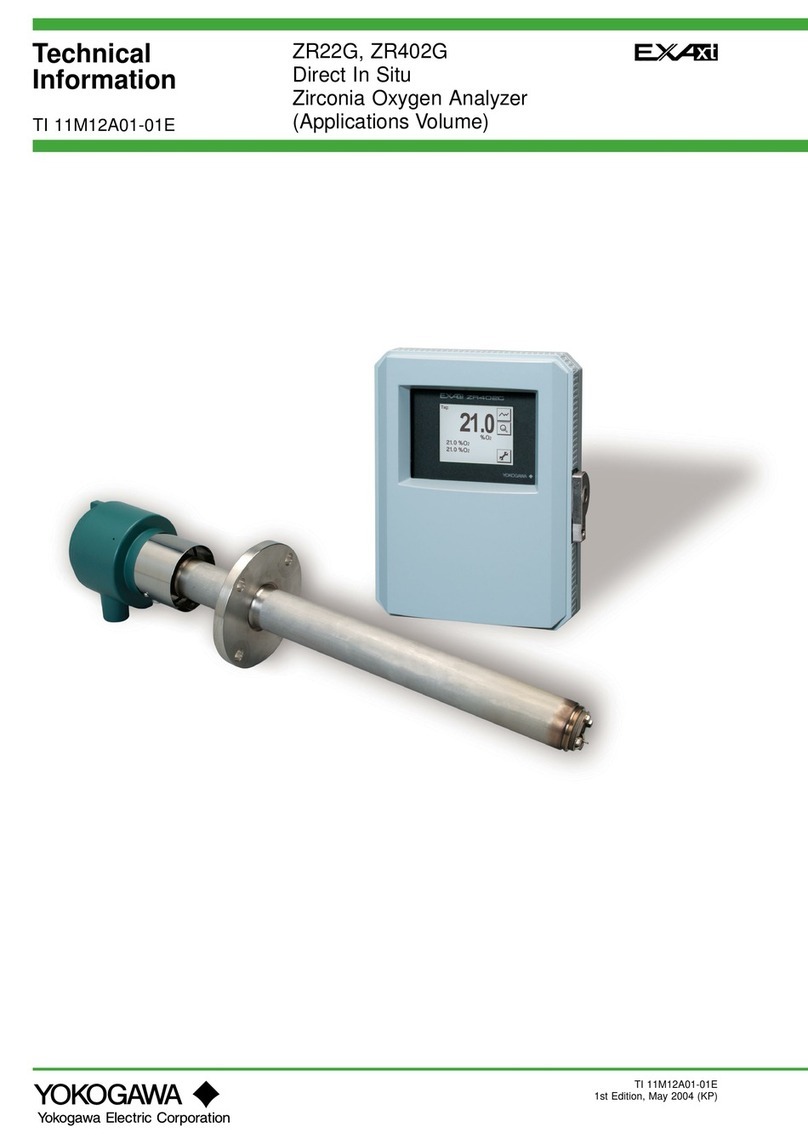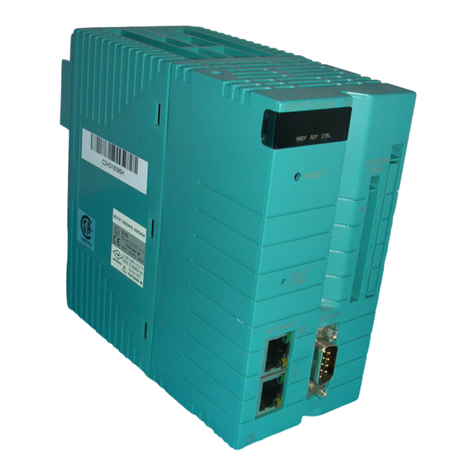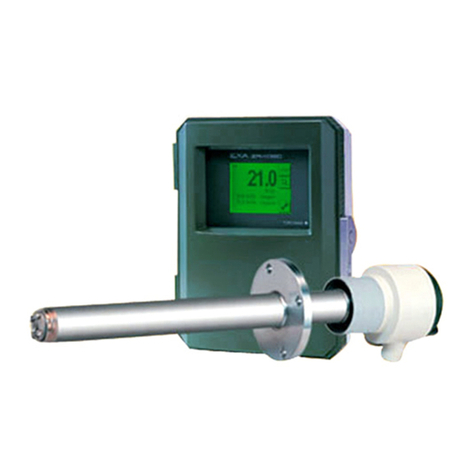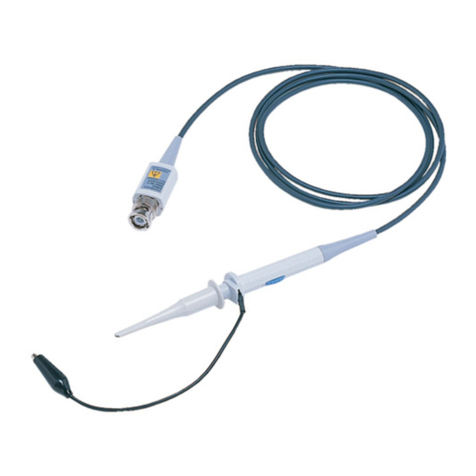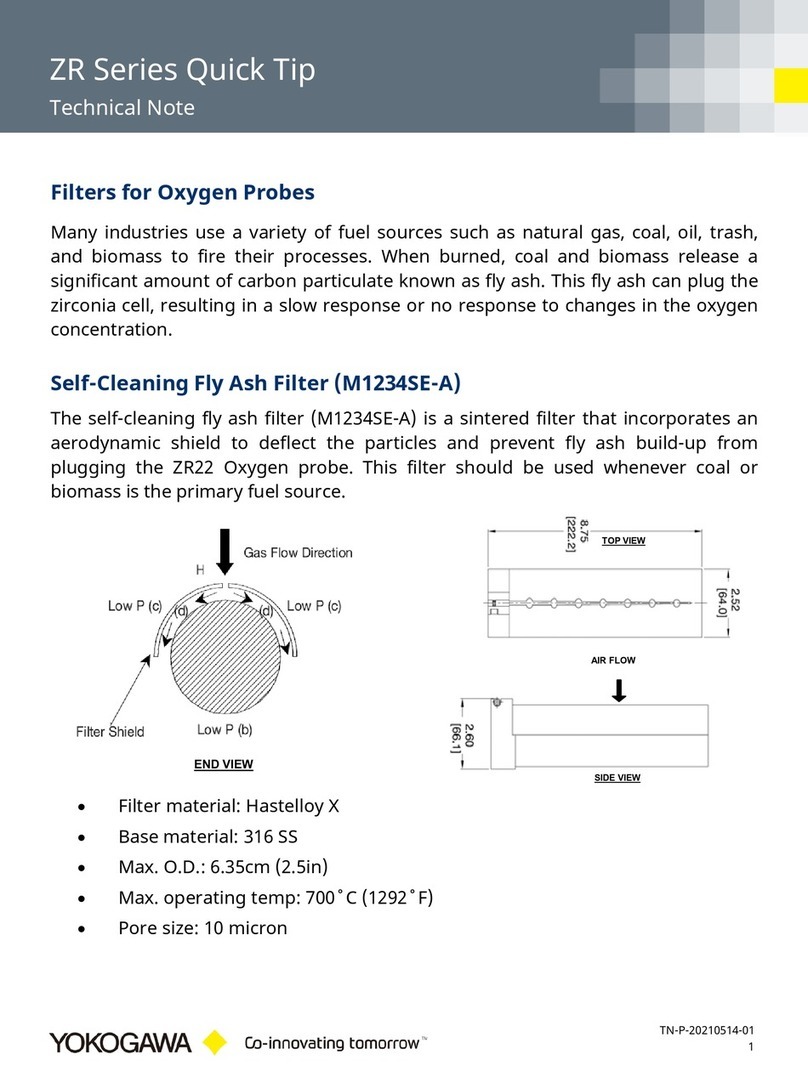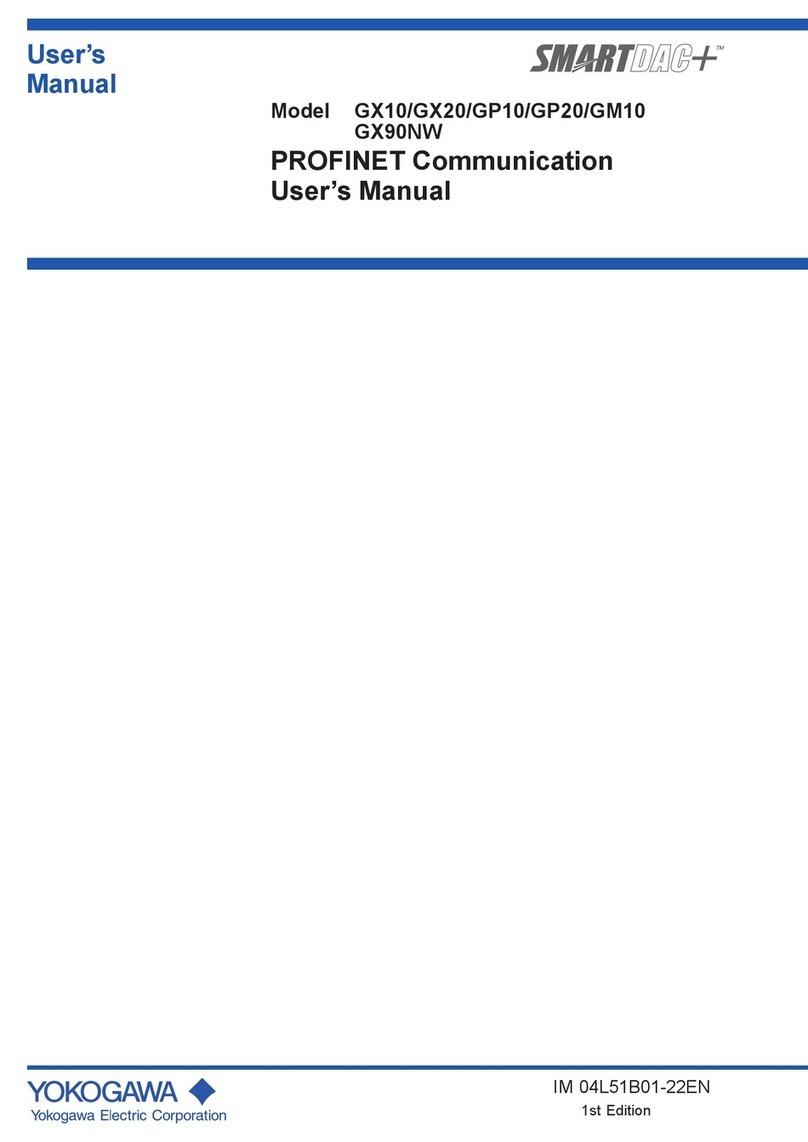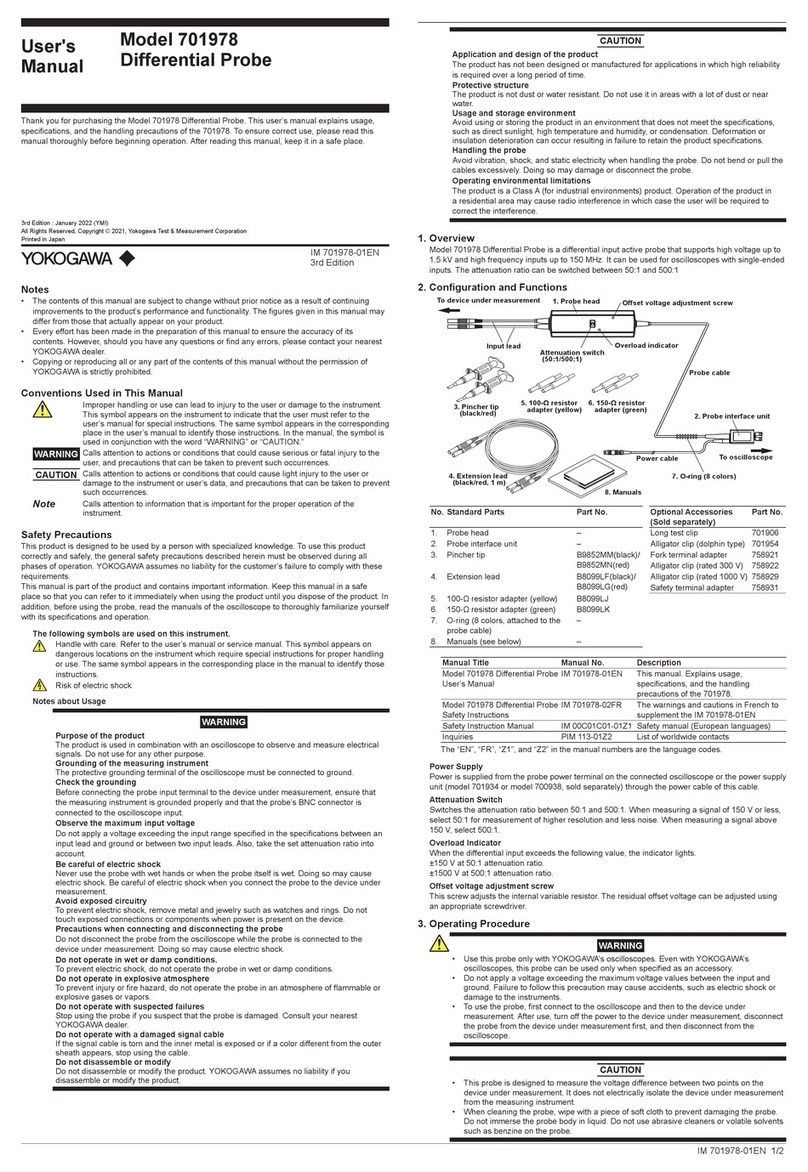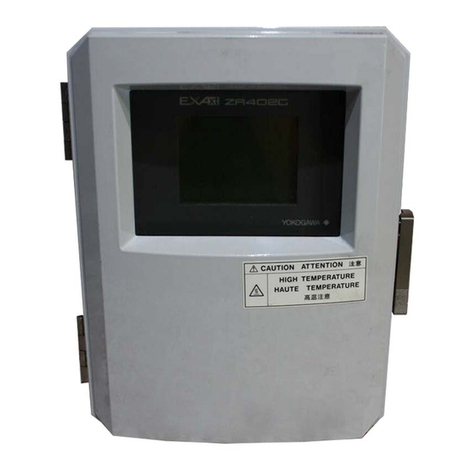
IM 701922-01E 1/2
r’s
Thank you for purchasing the Differential Probe (Model 701922) for the DL series. To ensure correct
use, please read this manual thoroughly before beginning operation. After reading the manual, keep it
in a convenient location for quick reference whenever a question arises during operation.
Contact information of Yokogawa offices worldwide is provided on the following sheet.
• PIM113-01Z2 Listofworldwidecontacts
Model 701922
Differential Probe
for the DL Series
7th Edition: May 2018 (YMI)
AllRightsReserved,Copyright©2003,YokogawaElectricCorporation
All Rights Reserved, Copyright © 2010, Yokogawa Test & Measurement Corporation
Printed in Japan
The following symbols are used in this manual.
Improper handling or use can lead to injury to the user or damage to the instrument.
This symbol appears on the instrument to indicate that the user must refer to the
user’s manual for special instructions. The same symbol appears in the corresponding
place in the user’s manual to identify those instructions. In the manual, the symbol is
used in conjunction with the word “WARNING” or “CAUTION.”
WARNING Calls attention to actions or conditions that could cause serious or fatal injury to the
user, and precautions that can be taken to prevent such occurrences.
CAUTION Calls attentions to actions or conditions that could cause light injury to the user or
damage to the instrument or user’s data, and precautions that can be taken to prevent
such occurrences.
French
AVERTISSEMENT Attire l’attention sur des gestes ou des conditions susceptibles de provoquer
des blessures graves (voire mortelles), et sur les précautions de sécurité
pouvant prévenir de tels accidents.
ATTENTION Attire l’attention sur des gestes ou des conditions susceptibles de provoquer des
blessures légères ou d’endommager l’instrument ou les données de l’utilisateur, et
sur les précautions de sécurité susceptibles de prévenir de tels accidents.
Note Calls attention to information that is important for proper operation of the instrument.
Safety Precautions
This product is designed to be used by a person with specialized knowledge.
Make sure to comply with the safety precautions mentioned hereafter when handling the probe.
YOKOGAWA assumes no responsibility for any consequences resulting from failure to comply with
these safety precautions. Also, read the User’s Manual of the measuring instrument thoroughly so that
you are fully aware of its specifications and handling, before starting to use the probe.
This manual is part of the product and contains important information. Store this manualin a safe place
close to the instrument so that you can refer to it immediately. Keep this manual until you dispose of
the instrument.
The following symbols are used on this instrument.
Handle with care. Refer to the user’s manual or service manual. This symbol appears on
dangerous locations on the instrument which require special instructions for proper handling
or use. The same symbol appears in the corresponding place in the manual to identify those
instructions.
Risk of electric shock
French
À manipuler délicatement. Toujours se reporter aux manuels d’utilisation et d’entretien. Ce
symbole a été apposé aux endroits dangereux de l’instrument pour lesquels des consignes
spéciales d’utilisation ou de manipulation ont été émises. Le même symbole apparaît à l’endroit
correspondant du manuel pour identifier les consignes qui s’y rapportent.
Risque de choc électrique
Make sure to comply with the following safety precautions in order to prevent accidents
such as an electric shock which impose serious health risks to the user and damage to the
instrument.
WARNING
Grounding of the measuring instrument
The protective grounding terminal of the measuring instrument must be connected to ground.
Connecting the object of measurement
Make sure to avoid an electric shock when connecting the probe to the object of
measurement. Do not remove the probe from the measuring instrument after the object of
measurement is connected.
Do not operated with suspected failures
If you suspect that there is damage to this probe, have it inspect by a service personnel.
Observe maximum working voltage
Do not apply a voltage exceeding 60 Vpeak between each input lead and ground, or
between the input leads themselves.
Must be grounded
This probe must be grounded with the BNC shell and an auxiliary grounding terminal,
through the grounding conductor of the power cord of the measuring instrument or other
appropriate grounding conductor. Before making connections to the input terminals of the
product, ensure that the output connector is attached to the BNC connector of the measuring
instrument and the auxiliary grounding terminal is connected to a proper ground, while the
measuring instrument is properly grounded.
Do not operate in wet/damp conditions
To avoid electric shock, do not operate this probe in wet or damp conditions.
Do not operate in explosive atmosphere
To aviod injury or fire hazard, do not operate this probe in an explosive atmosphere.
Avoid exposed circuitry
To avoid injury, remove jewelry such as rings, watches, and other metallic objects. Do not
touch exposed connections and components when power is present.
Do not disassemble or modify
Do not disassemble or modify the product. YOKOGAWA assumes no liability if you
disassemble or modify the product.
Damaged Signal Cable
If the signal cable is torn and the inner metal is exposed or if a color different from the outer
sheath appears, stop using the cable immediately.
CAUTION
Maximum input voltage
Do not apply any voltages exceeding the maximum input voltage to the probe.
Correct use of the power supply
UsewiththeDLseriesprobepowersupplyterminal,700938,or701934.
Connecting the external power supply to the probe
Always turn OFF the probe’s power switch when connecting or disconnecting the external
power supply.
Conditions of use
This product has not been designed or manufactured for applications in which high reliability
is required over a long time period.
Operating environment limitations
This product is a Class A (for industrial environments) product. Operation of this product in
a residential area may cause radio interference in which case the user is required to correct
the interference.
French
AVERTISSEMENT
Mise à la terre de l’instrument de mesure
S’assurer de connecter la mise à la terre protectrice de l’instrument de mesure.
Connexion de l’objet de la mesure
S’assurer d’éviter un choc électrique lors de la connexion de la sonde à l’objet de la mesure.
Ne pas retirer la sonde de l’instrument de mesure après avoir connecté l’objet de la mesure.
Ne pas utiliser en cas de défaillances suspectées
Si vous suspectez que la sonde est endommagée, contactez votre revendeur ou
représentant commercial YOKOGAWA.
Respecter la tension d’entrée maximum
Ne pas appliquer une tension dépassant 60 V (c.c. + crête c.a.) entre un fil d’entrée et la
terre ou entre deux fils d’entrée.
Doit être mis à terre
Cette sonde doit être mise à terre avec le connecteur BNC et le connecteur de terre
auxiliaire du cordon d’alimentation de l’instrument de mesure ou d’un autre conducteur de
mise à la terre approprié. Avant d’effectuer les connexions aux bornes d’entrée du produit,
vérifiez que le connecteur de sortie est connecté au connecteur BNC de l’instrument de
mesure et que la borne de mise à la terre auxiliaire est connectée à une mise à la terre
appropriée.
Ne pas utiliser dans des conditions humides
Afin d’éviter un choc électrique, ne pas utiliser cette sonde dans des conditions humides.”
Ne pas utiliser dans une atmosphère explosive
Afin d’éviter des risques de blessures ou d’incendie, ne pas utiliser cette sonde dans une
atmosphère explosive.
Éviter les circuits exposés
Afin d’éviter des blessures, retirer les bijoux comme les bagues, montres et autres objets
métalliques. Ne pas toucher les connexions et les composants exposés après mise sous
tension.
Ne pas démonter ou modifier
Ne pas démonter ou modifier le produit. YOKOGAWA se dégage de toute responsabilité si
vous démontez ou modifiez le produit.
Câble de signal endommagé
Si le câble de signal est déchiré et que le métal intérieur est exposé ou si une couleur
différente de la gaine externe est visible, arrêter immédiatement d’utiliser ce câble.
ATTENTION
Tension d’entrée maximum
Ne pas appliquer à la sonde de tension dépassant la tension d’entrée maximum.
Utilisation adéquate de l’alimentation
Utiliseravecleterminald’alimentationdelasondesérieDL,700938ou701934.
Connexion de l’alimentation externe à la sonde
Toujours éteindre l’interrupteur d’alimentation de la sonde lors de la connexion ou de la
déconnexion de l’alimentation externe.
Conditions d’utilisation
Ce produit n’est pas conçu ou fabriqué pour des applications nécessitant une fiabilité élevée
sur une longue période.
Limitations relatives à l’environnement opérationnel
Ce produit est un produit de classe A (pour environnements industriels). L’utilisation de ce
produit dans un zone résidentielle peut entraîner une interférence radio que l’utilisateur sera
tenu de rectifier.
Waste Electrical and Electronic Equipment
Waste Electrical and Electronic Equipment (WEEE), Directive
(This directive is valid only in the EU.)
This product complies with the WEEE directive marking requirement. This marking
indicates that you must not discard this electrical/electronic product in domestic
household waste.
Product Category
With reference to the equipment types in the WEEE directive, this product is classified
as a “Monitoring and control instruments” product.
When disposing products in the EU, contact your local Yokogawa Europe B.V. office.
Do not dispose in domestic household waste.
Authorized Representative in the EEA
Yokogawa Europe B.V. is the authorized representative of Yokogawa Test & Measurement Corporation
for this product in the EEA. To contact Yokogawa Europe B.V., see the separate list of worldwide
contacts,PIM113-01Z2.
IM 701922-01E
7th Edition
